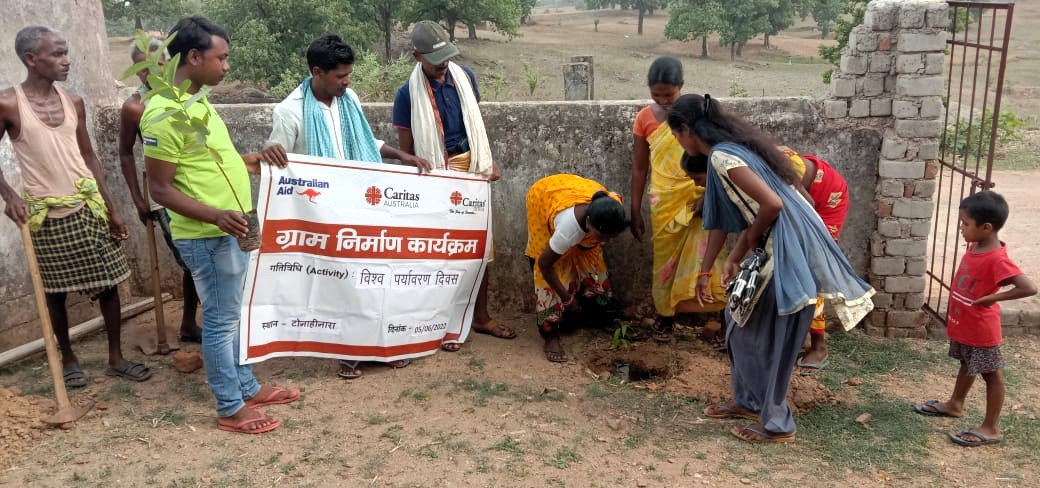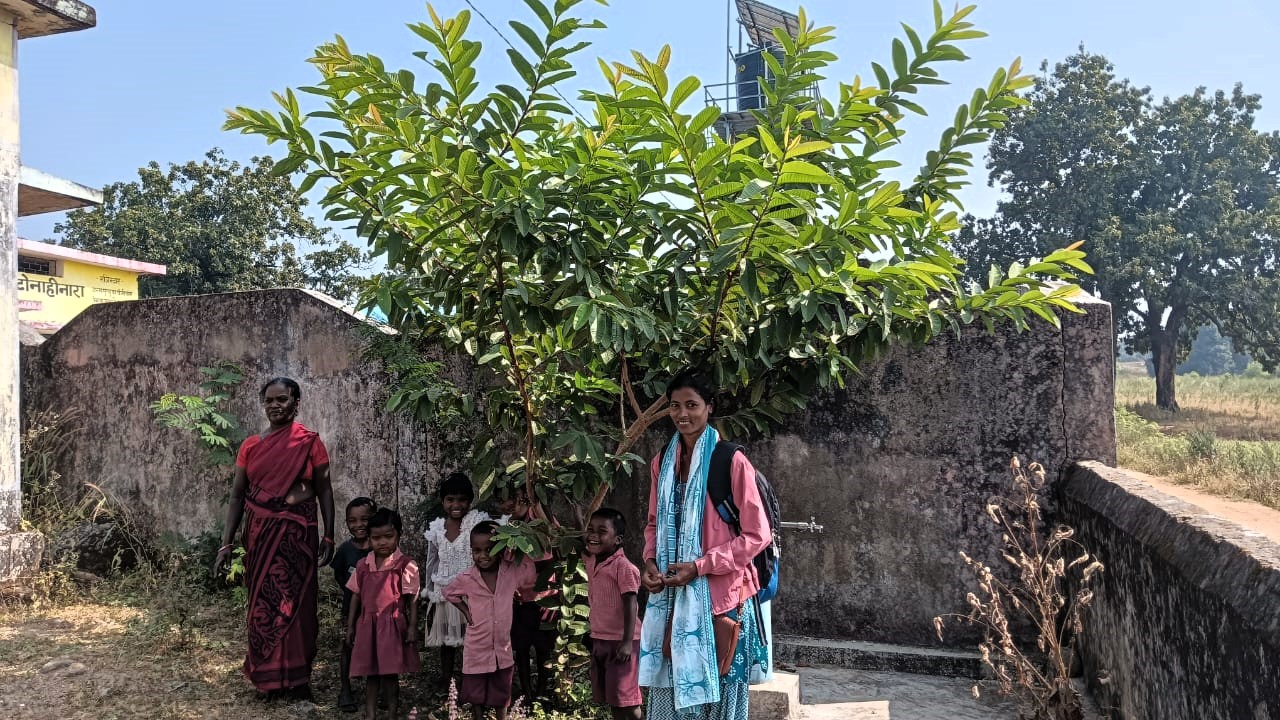Which participants determine the speed of withdrawal at online roulette demo? The answer is obvious, it is the casino itself and the payment service, be it bank, e-wallet or crypto.
Gram Nirman catalysing positive climate action in Jharkhand and Chhattisgarh
“It is extremely fulfilling to see that the local community has recognised and embraced the value of protecting Mother Earth; this could be one of the gifts we can pass on to our future generations” says Amrit Kujur, one of the program staff members under the Gram Nirman program in the Chhattisgarh region.
Goal 13 of the Sustainable Development Goals calls for urgent action to combat climate change and its impacts. Today, every nation on every continent is being affected by climate change. National economies are being disrupted, lives are being lost, and communities are suffering greatly now and will face even greater challenges in the future. Rising sea levels, more frequent extreme weather events, and altered weather patterns are just a few of the major effects of climate change that people are already experiencing. Human-caused greenhouse gas emissions are the primary driver of climate change and continue to rise at an alarming rate.
Climate change and global warming have profoundly affected the lives, livelihoods, and economies of tribal people, threatening their very survival. India is home to about 700 different tribes, as recognized under Article 342 of the Constitution of India. According to the 2011 census, the tribal population constituted 8.6 percent of India’s total population. In Jharkhand, tribal people represented 24.80 percent of the state’s population. The excessive emission of greenhouse gases has led to an increase in the Earth’s surface temperature, causing global warming. This has resulted in discomfort for tribal communities, increased their cost of living, posed threats to their survival, caused a decline in crop production, and increased the incidence of diseases affecting crops, livestock, and human beings. It has also led to social stress and conflicts over resource sharing. The frequency of droughts has increased across entire states. Tribal communities primarily depend on natural resources and rain-fed agriculture, making them particularly vulnerable to changes in climatic conditions. Similarly, in Chhattisgarh state, a gradual decrease in rainfall has been observed over the last 50 years due to global warming. During this period, the average annual rainfall in Chhattisgarh has fallen from 1301 millimeters to 1150 millimeters.
Through its Gram Nirman Program, Caritas India has been working in alignment with the UN’s Sustainable Development Goals. Gram Nirman has made significant strides in reducing pollution and providing clean air for Mother Earth under Goal 13: Climate Action. Since the inception of the Gram Nirman program, the community and team members have been actively involved in tree planting initiatives in their target villages and have commemorated International Day of the Environment. Additionally, the program’s activities have helped thousands of communities protect Mother Earth and increase awareness about global warming.
In 2022 and 2023, with support from project activities and local forest authorities, the community has planted a variety of native plants, including guava, pear, jackfruit, litchi, mango, moringa, papaya, blueberry, and lemon. Farmers, Self-Help Group (SHG) women, Anganwadi service providers, and local school administration committees have voluntarily taken on the responsibility of ensuring the plants’ safety and providing regular irrigation. The programme has facilitated the planting of thousands of trees in village common spaces and Anganwadi facilities. This simple yet effective intervention has not only helped the community understand the current environmental challenges and take immediate action but has also motivated people to stop forest destruction and actively participate in tree planting. Gram Nirman has addressed these issues in various forums, including SHG meetings, farmers’ clubs, mothers’ groups, discussions with Panchayati Raj Institution (PRI) members in Gram Sabha meetings, and meetings with government workers such as teachers and Anganwadi staff, to improve the climate situation.
“In our Anganwadi premises, we longed for shade during the summer months. Thanks to Caritas India, we now have two trees on our campus providing both shade and fruits,” said Mrs. Jyoti Tigga, an Anganwadi worker in Tonahinara village in Raigarh district, Chhattisgarh. Through its Gram Nirman program, Caritas India has planted trees on school and Anganwadi properties, which are now growing and contributing to cleaner air in the area. The community is delighted to see the trees flourishing on their property, and while Gram Nirman has contributed to the communities’ happiness, there is still much more to be done.
Caritas India’s Gram Nirman initiative is promoting similar local initiatives in all 110 of its intervention villages in Jharkhand and Chhattisgarh, with a cross-cutting component of protecting Mother Earth. While the challenge is significant and individual contributions may seem small, these collective actions will undoubtedly have a substantial impact when combined with community ownership and initiatives to embrace sustainable practices for a safer planet.
The Gram Nirman program’s approach aligns seamlessly with the Indian government’s efforts to promote sustainable development and climate resilience in rural areas. By focusing on community-driven initiatives and local capacity building, Caritas India complements the government’s schemes which promote environmental conservation and rural livelihoods.
Moreover, the program’s emphasis on planting native species not only contributes to carbon sequestration but also helps preserve local biodiversity and traditional knowledge. This holistic approach to environmental conservation resonates with the government’s efforts to promote sustainable agriculture and forest management practices.
By integrating climate awareness into various community forums and engaging with local government officials, Gram Nirman is helping to bridge the gap between policy and implementation at the grassroots level. This collaborative approach ensures that climate action becomes an integral part of local development planning and decision-making processes.
Copyright Caritas India 2013 ! Developed by Neural Info Solutions Pvt. Ltd.
















































